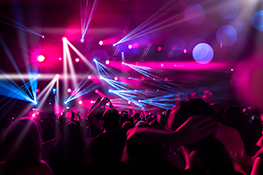DMX Control for Stage Lighting Simplified
DMX (Digital Multiplex) control is the industry standard for controlling stage lighting, offering a powerful and flexible way to create stunning visuals for live performances, events, and more. Whether you’re a seasoned lighting professional or just starting out, understanding DMX control is essential for unleashing the full potential of your lighting rig. This guide will provide a clear and concise explanation of DMX control, breaking down its fundamentals, benefits, and practical applications.
What is DMX Control?
DMX control is a communication protocol that allows you to send digital data over a single cable to control multiple lighting fixtures simultaneously. This data includes parameters like:
Key DMX Control Parameters:
- Intensity: Adjusts the brightness of the fixture.
- Color: Controls the color of the light, often using RGB (red, green, blue) values.
- Position: For moving heads, this controls pan and tilt angles.
- Gobo Patterns: Selects different patterns projected by the fixture.
- Strobe Effects: Creates flashing and strobe effects.
- Dimmer Curves: Influences how smoothly the light fades in and out.
Benefits of DMX Control
DMX control offers significant advantages over traditional analog systems:
Enhanced Control and Flexibility:
- Precise Control: DMX allows for extremely fine control over all aspects of your lighting fixtures.
- Multiple Fixture Control: Control dozens, even hundreds, of fixtures from a single console.
- Advanced Features: DMX enables complex functions like chases, sequences, and effects.
Reliability and Efficiency:
- Reduced Cabling: DMX uses a single cable to control multiple fixtures, minimizing clutter and simplifying setup.
- Data Integrity: DMX transmits digital data, ensuring accurate and consistent control.
- Remote Control: DMX consoles allow for remote control, eliminating the need to be physically near fixtures.
Understanding DMX Components
A basic DMX system typically consists of these key components:
1. DMX Controller (Console):
The heart of your DMX setup, where you program and control your lighting cues.
2. DMX Interface (Interface):
Connects your DMX controller to your computer or other control source.
3. DMX Cable:
Carries the DMX signal from the controller to the fixtures.
4. DMX-Enabled Fixtures:
Lighting fixtures equipped with DMX inputs to receive and interpret control signals.
DMX Control in Action: Practical Applications
DMX control finds wide application in various settings:
Live Performances:
- Theater: DMX control is essential for complex lighting cues and scene transitions.
- Concert Lighting: Create dynamic and visually captivating effects for musicians and bands.
- Dance Shows: DMX enables intricate lighting patterns and sequences to enhance dance performances.
Events:
- Corporate Events: Elevate presentations and conferences with professional lighting.
- Weddings: Create a romantic and memorable atmosphere with customized lighting designs.
- Festivals: DMX control is ideal for large-scale event lighting, ensuring coordinated and impactful visuals.
Other Uses:
DMX is also used in:
- Architectural Lighting: Control the lighting of buildings and structures.
- Museum Displays: Highlight exhibits and create immersive experiences.
- Theme Parks: Power immersive rides and attractions with dynamic lighting effects.
Setting Up a DMX System: A Step-by-Step Guide
Setting up a basic DMX system involves these steps:
1. Choose Your DMX Controller:
Select a controller with the features and capabilities you need, considering the number of fixtures and complexity of your lighting design.
2. Connect Your Controller:
Connect your controller to your computer or other control source using the appropriate interface.
3. Connect Your Fixtures:
Connect your DMX-enabled fixtures using DMX cables. Be sure to connect the fixtures in a chain, ensuring the data flow is continuous.
4. Address Your Fixtures:
Assign a unique DMX address to each fixture. This allows the controller to identify and control each fixture individually.
5. Program Your Cues:
Use your DMX controller to create lighting cues and sequences. This involves programming the desired lighting parameters for each fixture at specific points in time.
6. Test and Fine-tune:
Run your DMX system to test the lighting cues and make necessary adjustments to achieve the desired visual effects.
Tips for Effective DMX Control
Follow these tips to optimize your DMX control experience:
- Use Quality Cables: Ensure your DMX cables are in good condition and compatible with your system.
- Address Your Fixtures Carefully: Avoid assigning the same address to multiple fixtures, as this can cause conflicts.
- Plan Your Lighting Design: Create a lighting plan before programming your DMX controller to ensure a cohesive and visually appealing result.
- Take Advantage of DMX Features: Explore the advanced features of your DMX controller, such as chasing, sequencing, and effects.
- Back Up Your Programs: Regularly save your DMX programs to avoid losing valuable work.
Embrace the Power of DMX Control
DMX control empowers you to unleash your creativity and transform your lighting into a dynamic and impactful element of your performances, events, and productions. Explore the world of DMX and unlock the full potential of your stage lighting. For expert advice, personalized solutions, and exceptional lighting products, contact Stagelights.in.
Contact Us
Reach out to us for all your stage lighting needs!
Phone: 1800 200 6000, +91 90150 60000
Email: info@stagelights.in


 Auditorium Construction Services
Auditorium Construction Services 